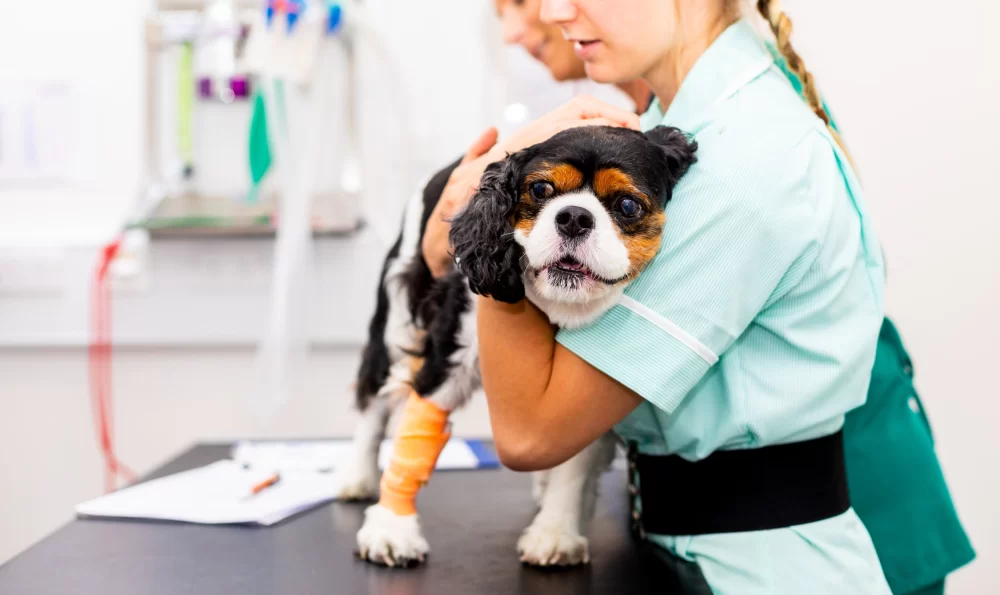How Many Veterinary Emergency Group Locations Are There?
When your pet experiences an emergency, having access to immediate care is crucial. Veterinary emergency group locations are specifically designed to provide urgent medical attention to animals in distress. Whether your pet is suffering from an injury, illness, or any critical condition, it's important to know where the nearest veterinary emergency group location is. But how many of these emergency facilities exist, and how do they help? In this article, we will explore the presence of these services and why they are vital for pet owners across the country.
1. The Need for Veterinary Emergency Group Locations
Just like human emergency rooms, veterinary emergency facilities are designed to handle critical situations that require immediate attention. These services are essential for pet owners, as not every routine veterinary clinic is equipped to handle after-hours emergencies. Veterinary emergency group locations are typically open 24/7, offering around-the-clock care for animals who require urgent medical treatment.
In the United States, many major cities and even rural areas have dedicated emergency veterinary services. These clinics specialize in everything from trauma care to medical emergencies, and their goal is to stabilize pets in critical condition and provide them with the best chance for recovery.
2. Types of Veterinary Emergency Services
Veterinary emergency group locations provide a variety of services to meet the diverse needs of animals in crisis. These services typically include:
- Emergency Surgery: Many emergency clinics are equipped to handle surgeries needed to treat injuries or conditions that could otherwise be life-threatening.
- Critical Care: Intensive care units (ICU) for animals requiring close monitoring and medical support after an emergency.
- Trauma Care: Immediate medical intervention for pets who have suffered from accidents, such as car accidents or falls.
- Poison Control: Emergency care for pets who have ingested harmful substances, with rapid treatments available to reverse poisoning effects.
- Diagnostic Testing: On-site diagnostic tools such as X-rays, blood tests, and ultrasounds to quickly assess a pet's condition.
These services ensure that your pet can receive the care it needs right when it needs it, preventing further complications and giving it the best chance for recovery.
3. How Many Veterinary Emergency Group Locations Are There in the US?
The number of veterinary emergency group locations in the U.S. has increased significantly in recent years, driven by the growing need for emergency pet care. As of now, there are more than 1,000 veterinary emergency clinics across the country, many of which are part of larger networks or independently owned facilities.
Each veterinary emergency group may operate multiple locations within a region, so the availability of emergency services can vary depending on your geographic area. For example, urban centers tend to have more facilities, while rural areas may have fewer, but they are often supported by regional veterinary networks that collaborate to ensure access to emergency care.
Many of these facilities also offer specialized services, such as orthopedic surgery, cardiology, or dermatology, for pets who need specialized care after an emergency. Some veterinary emergency group locations are even affiliated with teaching hospitals at veterinary schools, where cutting-edge treatments and procedures are utilized.
4. How to Find a Veterinary Emergency Group Location Near You
In a time of crisis, the last thing you want to do is waste precious minutes searching for a reliable emergency veterinary clinic. Fortunately, finding the nearest veterinary emergency group location is easier than ever. Many pet owners rely on online resources and veterinary association websites to quickly locate nearby facilities. Some options include:
- Online Search Engines: A quick search like "veterinary emergency near me" can yield instant results with maps, contact information, and hours of operation.
- Veterinary Associations: Websites like the American Animal Hospital Association (AAHA) and the Veterinary Emergency & Critical Care Society (VECCS) provide directories of accredited emergency facilities across the country.
- Mobile Apps: Some apps are dedicated to helping pet owners find local veterinarians, including emergency services. These apps often provide additional information, such as reviews and ratings.
Additionally, many veterinary hospitals and primary care vets have partnerships with emergency clinics, and they may be able to refer you to a trusted facility when an emergency arises. It’s a good idea to familiarize yourself with nearby emergency services before an emergency occurs so that you can act quickly.
5. Why Should You Choose a Veterinary Emergency Group Location?
Choosing a veterinary emergency group location over a general practice veterinary office for urgent care offers several advantages:
- 24/7 Availability: These facilities are open 24 hours a day, 7 days a week, so you never have to worry about after-hours emergencies.
- Expertise in Emergency Medicine: Emergency vets have specialized training in managing critical situations, which can be crucial for your pet’s survival.
- Advanced Equipment: Veterinary emergency groups are often equipped with advanced diagnostic and treatment tools, such as CT scans, MRI machines, and blood gas analyzers, to provide the best possible care for your pet.
In addition to these benefits, many veterinary emergency group locations offer additional services, including follow-up care and ongoing treatment options for pets with chronic conditions. The level of care these facilities provide ensures that your pet is in good hands, no matter the severity of the situation.
6. When Should You Take Your Pet to a Veterinary Emergency Group Location?
It’s important to know when to seek emergency care for your pet. Some signs that your pet needs immediate attention include:
- Difficulty breathing or labored breathing
- Excessive bleeding that doesn't stop
- Severe vomiting or diarrhea
- Seizures or loss of consciousness
- Severe trauma or injury, such as broken bones or deep cuts
- Ingestion of toxic substances, such as chocolate, certain plants, or household chemicals
If you notice any of these signs, it’s important to act quickly and contact the nearest veterinary emergency group location for immediate care. Every minute counts in an emergency, and prompt action can make a significant difference in your pet’s recovery.












